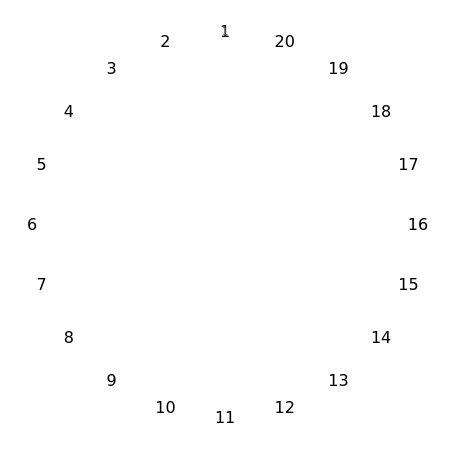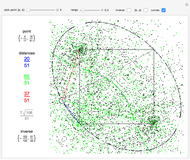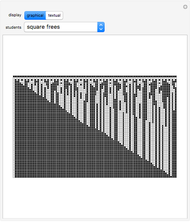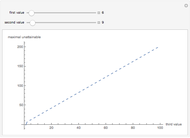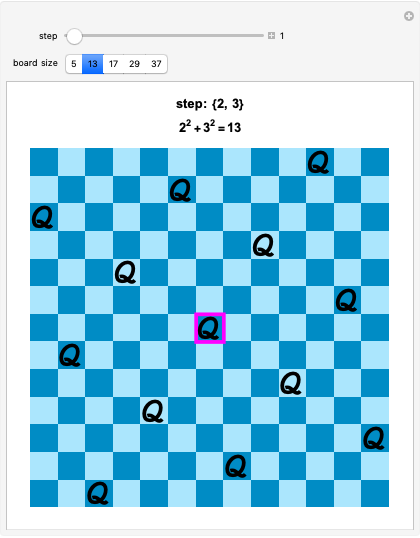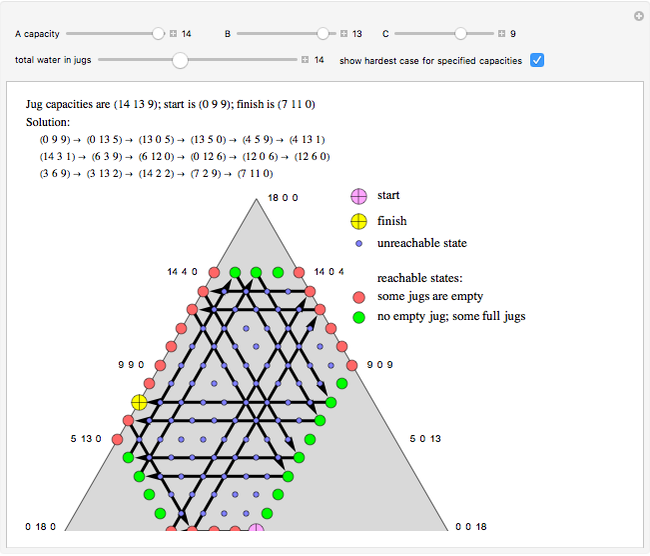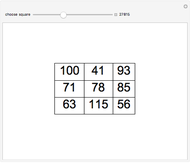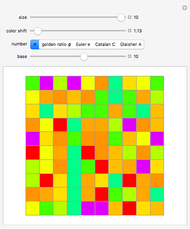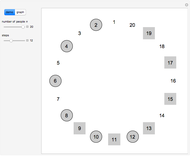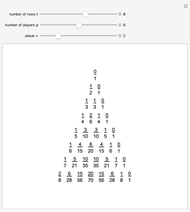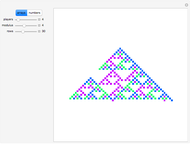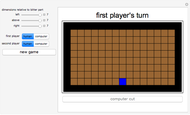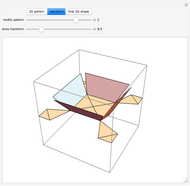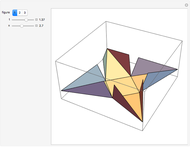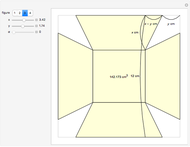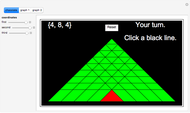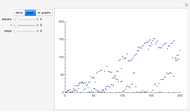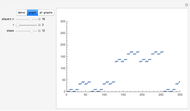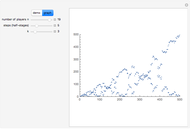Bidirectional Variant of Josephus Problem

Requires a Wolfram Notebook System
Interact on desktop, mobile and cloud with the free Wolfram Player or other Wolfram Language products.
The classical version of the Josephus problem counts off  people arranged in a circle and eliminates every second person. The process continues until only one person is left.
people arranged in a circle and eliminates every second person. The process continues until only one person is left.
Contributed by: Masakazu Naito and Ryohei Miyadera (September 2017)
Open content licensed under CC BY-NC-SA
Snapshots
Details
This new Josephus problem generalizes [1].
The graph of the list  is self-similar (a fractal).
is self-similar (a fractal).
The list  {1, 3, 4, 3, 6, 3, 3, 3, 1, 7, 5, 11, 7, 15, 14, 15, 12, 3, 12, 11, 14, 3, 22, 23, 20, 7, 28, 11, 30, 15, 11, 11, 9, 27, 5, 11, 7, 27, 3, 3, 1, 23, 5, 27, 7, 31, 19, 19, 17, 43, 13, 43, 15, 43, 27, 27, 25, 55, 29, 59, 31, 63, 54, 55, 52, 19, 52, 59, 54, 19, 46, 47, 44, 7, 52, 11, 54, 15, 46, 47, 44, 3, 44, 43, 46, 3, 54, 55, 52, 7, 60, 11, 62, 15, 86, 87, 84, 35, 84, 91, 86, 35, 78, 79, 76, 23, 84, 27, 86, 31, 110, 111, 108, 51, 108, 43, 110, 51, 118, 119, 116, 55, 124, 59, 126, 63, 43, 43, 41, 107, 37, 43, 39, 107, 35, 35, 33, 103, 37, 107, 39, 111, 19, 19, 17, 91, 13, 43, 15, 91, 27, 27, 25, 103, 29, 107, 31, 111, 11, 11, 9, 91, 5, 11, 7, 91, 3, 3, 1, 87, 5, 91, 7, 95, 19, 19, 17, 107, 13, 107, 15, 107, 27, 27, 25, 119, 29, 123, 31, 127, 75, 75, 73, 171, 69, 75, 71, 171, 67, 67, 65, 167, 69, 171, 71, 175, 51, 51, 49, 155, 45, 171, 47, 155, 59, 59, 57, 167, 61, 171, 63, 175, 107, 107, 105, 219, 101, 107, 103, 219, 99, 99, 97, 215, 101, 219, 103, 223, 115, 115, 113, 235, 109, 235, 111, 235, 123, 123, 121, 247, 125, 251, 127, 255, 214}.
{1, 3, 4, 3, 6, 3, 3, 3, 1, 7, 5, 11, 7, 15, 14, 15, 12, 3, 12, 11, 14, 3, 22, 23, 20, 7, 28, 11, 30, 15, 11, 11, 9, 27, 5, 11, 7, 27, 3, 3, 1, 23, 5, 27, 7, 31, 19, 19, 17, 43, 13, 43, 15, 43, 27, 27, 25, 55, 29, 59, 31, 63, 54, 55, 52, 19, 52, 59, 54, 19, 46, 47, 44, 7, 52, 11, 54, 15, 46, 47, 44, 3, 44, 43, 46, 3, 54, 55, 52, 7, 60, 11, 62, 15, 86, 87, 84, 35, 84, 91, 86, 35, 78, 79, 76, 23, 84, 27, 86, 31, 110, 111, 108, 51, 108, 43, 110, 51, 118, 119, 116, 55, 124, 59, 126, 63, 43, 43, 41, 107, 37, 43, 39, 107, 35, 35, 33, 103, 37, 107, 39, 111, 19, 19, 17, 91, 13, 43, 15, 91, 27, 27, 25, 103, 29, 107, 31, 111, 11, 11, 9, 91, 5, 11, 7, 91, 3, 3, 1, 87, 5, 91, 7, 95, 19, 19, 17, 107, 13, 107, 15, 107, 27, 27, 25, 119, 29, 123, 31, 127, 75, 75, 73, 171, 69, 75, 71, 171, 67, 67, 65, 167, 69, 171, 71, 175, 51, 51, 49, 155, 45, 171, 47, 155, 59, 59, 57, 167, 61, 171, 63, 175, 107, 107, 105, 219, 101, 107, 103, 219, 99, 99, 97, 215, 101, 219, 103, 223, 115, 115, 113, 235, 109, 235, 111, 235, 123, 123, 121, 247, 125, 251, 127, 255, 214}.
If we divide these numbers by two, then the remainders are
{1, 1, 0, 1, 0, 1, 1, 1, 1, 1, 1, 1, 1, 1, 0, 1, 0, 1, 0, 1, 0, 1, 0, 1, 0, 1, 0, 1, 0, 1, 1, 1, 1, 1, 1, 1, 1, 1, 1, 1, 1, 1, 1, 1, 1, 1, 1, 1, 1, 1, 1, 1, 1, 1, 1, 1, 1, 1, 1, 1, 1, 1, 0, 1, 0, 1, 0, 1, 0, 1, 0, 1, 0, 1, 0, 1, 0, 1, 0, 1, 0, 1, 0, 1, 0, 1, 0, 1, 0, 1, 0, 1, 0, 1, 0, 1, 0, 1, 0, 1, 0, 1, 0, 1, 0, 1, 0, 1, 0, 1, 0, 1, 0, 1, 0, 1, 0, 1, 0, 1, 0, 1, 0, 1, 0, 1, 1, 1, 1, 1, 1, 1, 1, 1, 1, 1, 1, 1, 1, 1, 1, 1, 1, 1, 1, 1, 1, 1, 1, 1, 1, 1, 1, 1, 1, 1, 1, 1, 1, 1, 1, 1, 1, 1, 1, 1, 1, 1, 1, 1, 1, 1, 1, 1, 1, 1, 1, 1, 1, 1, 1, 1, 1, 1, 1, 1, 1, 1, 1, 1, 1, 1, 1, 1, 1, 1, 1, 1, 1, 1, 1, 1, 1, 1, 1, 1, 1, 1, 1, 1, 1, 1, 1, 1, 1, 1, 1, 1, 1, 1, 1, 1, 1, 1, 1, 1, 1, 1, 1, 1, 1, 1, 1, 1, 1, 1, 1, 1, 1, 1, 1, 1, 1, 1, 1, 1, 1, 1, 1, 1, 1, 1, 1, 1, 0}.
This sequence can be divided into subsequences
{1,1},
{0,1,0,1},
{1,1,1,1,1,1,1,1},
{0,1,0,1,0,1,0,1,0,1,0,1,0,1,0,1},
{1,1,1,1,1,1,1,1,1,1,1,1,1,1,1,1,1,1,1,1,1,1,1,1,1,1,1,1,1,1,1,1},  ,
,
The lengths of these subsequences are 2, 4, 8, 16, 32,  .
.
Reference
[1] H. Matsui, T. Yamauchi, D. Minematsu, S. Tatsumi, M. Naito, T. Inoue and R. Miyadera. "The Josephus Problem in Both Directions" from the Wolfram Demonstrations Project—A Wolfram Web Resource. demonstrations.wolfram.com/TheJosephusProblemInBothDirections.
Permanent Citation
